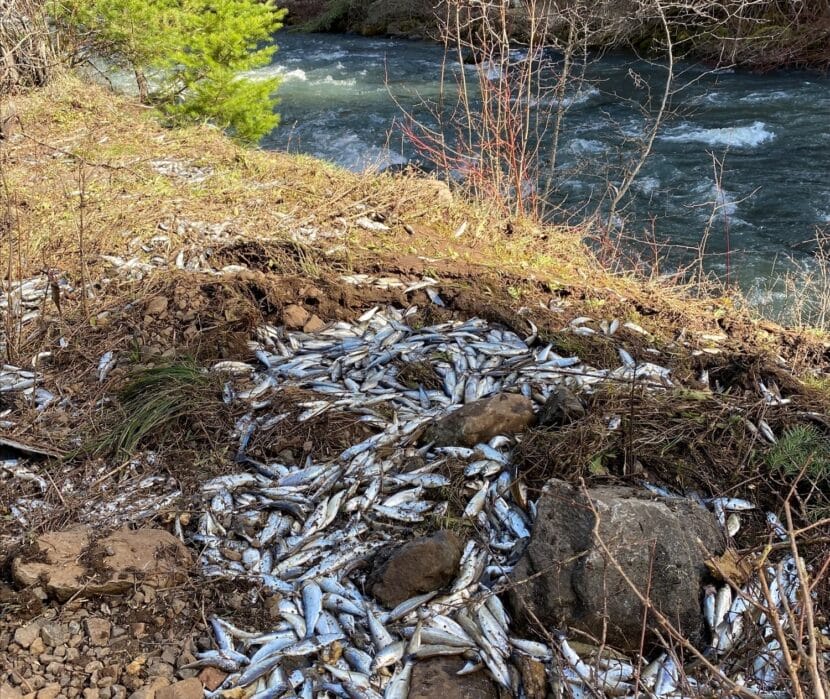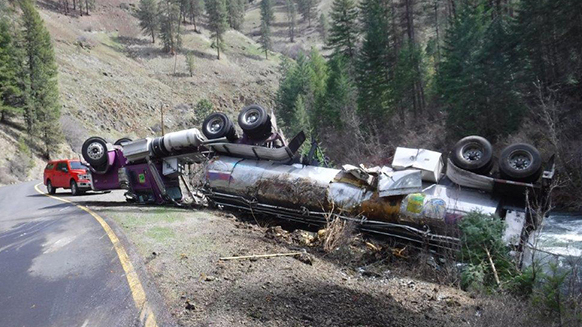First, the good news. When a 53-foot fish tanker truck crashed and rolled upside down on an embankment next to a creek in northeast Oregon, its driver suffered only minor injuries. And as the truck came to a rest, its tank settled downhill, next to the water.
That last detail was crucial for the truck’s cargo: some 102,000 spring chinook smolts, or young salmon, that had been raised in a hatchery. The truck overturned on a twisting road that mirrors Lookingglass Creek — and some 77,000 fish made it from the tanker into the creek’s fresh, inviting water, according to the Oregon Department of Fish and Wildlife.
But there is also bad news: 25,529 smolts died, recovered from the tanker and the bank of the creek. And the fish that survived are now living in the wrong waterway.
The fish had been raised at Lookingglass Hatchery to give a population boost to wild salmon in the Imnaha River, around 90 miles to the east.
“The smolts lost represent about 20 percent of the total that will be released into the Imnaha River this year,” the Oregon Department of Fish and Wildlife said.

The smolts — the term for young salmon that are old enough to transition from freshwater to the salty ocean — had been on the cusp of freedom, ready for release in the hopes that hundreds of them would migrate to the Pacific and back to spawn.
Instead of the Imnaha River, the smolts are in Lookingglass Creek, a tributary of the Grande Ronde River. And for those that survive long enough to spawn, the creek is now the destination they’ll punch into their piscine GPS system.
“Fishery managers expect to see about 500-900 fewer adult fish returning in 2026 and 2027 due to the loss,” Oregon’s wildlife agency said. “The 77,000 fish that made it into Lookingglass Creek will likely return there and produce approximately 350-700 additional adults.”
Both the Imnaha and Grande Ronde are tributaries of the Snake River, which in turn feeds into the Columbia River and, finally, the ocean.
The spring chinook salmon is federally listed as a threatened species in the Snake River, including the fish’s important origin locations such as the Grande Ronde and Imnaha rivers.
The hatchery program is part of a plan to mitigate challenges to the salmon population posed by hydropower projects, according to the Oregon Department of Fish and Wildlife. For decades, the Nez Perce Tribe and the Confederated Tribes of the Umatilla Indian Reservation have been working to return salmon to Lookingglass Creek and other habitats in the area, looking to restore historic cycles of animal life and human tradition.
9(MDEwMjQ0ODM1MDEzNDk4MTEzNjU3NTRhYg004))






